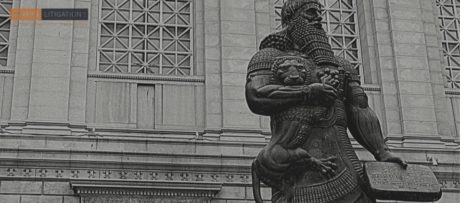For many, the greatest loves of their lives are their furry (or scaly) friends. As a result, there is often a strong desire to make sure they are properly cared for after the testator’s death. How to accomplish this is not always straightforward.
In Ontario, animals are considered personal property. This means that you can gift your dog to a friend in your will the same way you could gift them your toaster. It also means you cannot gift anything directly to your pet, just as your toaster cannot be a beneficiary of your estate.
There is no requirement to accept a gift – you can turn down a gift of a fish in the same way you can turn down the toaster (no need to explain that you don’t need two toasters). Since dogs and cats (and turtles too) are much more active than toasters and require a higher degree of care and attention, the likelihood that gifts of pets may be turned down is just as high. So testators will often build in an monetary incentive for the person they hope will agree to care for their pets after they die. Two common planning techniques include: (i) contingent bequests: if the beneficiary agrees to care for the dog, then she will receive a lump sum payment; or (ii) a trust is set up to pay for the continued care and maintenance of the pet (and in some rare cases, even for security).
However, it is a universal truth that where there is money, there are problems. A recent example of this occurred in Lobb v Thiele, 2020 ONSC 7553. In that case, Josie set out her plans for her two dogs, Niko and Duke, in her will: $150,000 would be paid to the individual who assumed the care and residence of Niko, and another $150,000 to the individual who assumed the care and residence of Duke. (A few months later, Josie executed a codicil reducing the amount to be paid to the caretaker of each dog to $100,000.) Josie named her friend, Glenn, as her first choice of caretaker of both dogs. If Glenn declined, the estate trustee was given the discretion to find a suitable alternative dog lover.
When Josie died, her estate trustee, Mary, took temporary possession of Duke and Niko. However, following a fight between the dogs which led to a trip to the vet, Mary’s son took Niko so they could be separated.
At the same time, Mary reached out to Glenn to ask whether he would like the dogs. Notably, Mary did not tell Glenn about the monetary incentive in Josie’s will, only that Josie had named Glenn as her preferred caretaker for the dogs. Glenn did not learn of the monetary gift associated with caring for the dogs until later, around the time Mary applied for probate.
Mary’s and Glenn’s stories differed from that point forward. Mary claimed that Glenn agreed to take Duke, but not Niko, on the basis that his wife was afraid of Niko. Glenn claimed that he wanted both dogs. Citing her belief that it was in the dogs’ best interest to be kept apart, Mary refused to deliver Niko to Glenn. When they did not reach a resolution on their own, Glenn brought a court application for possession of Niko.
Because this was an application (as opposed to an action/claim), there was no live testimony at the hearing. Rather, the judge carefully read the affidavits filed by the parties, including the history of text messages between Mary and Glenn, and heard the submission of counsel. On the review of the evidence, the judge found that Glenn initially declined to take possession of Niko. The judge held that Mary was entitled to rely on Glenn’s initial refusal to take both dogs to make alternate plans for Niko. Once those plans had been made, it was too late for Glenn to change his mind. Accordingly, the judge dismissed Glenn’s application for possession of Niko.
While even the best laid plans can go awry, more often than not clear instructions in a will can lead to a smooth estate administration. If the care of your pets is something that you are concerned about, there is an increasing number of options available to provide for the care of pets following their owners’ death (and on a dog’s death). Some examples can be found here and here.

